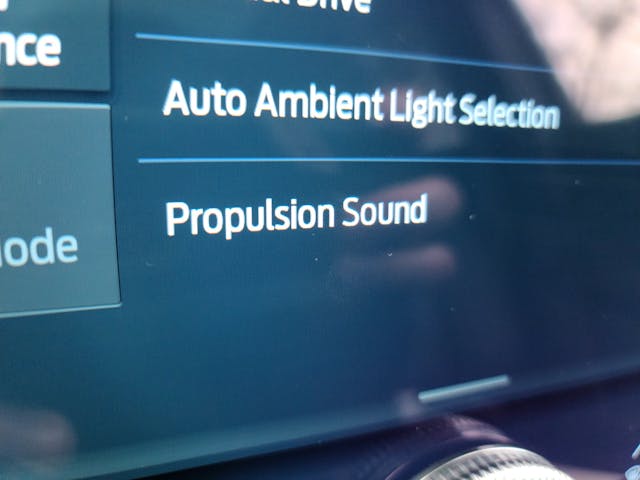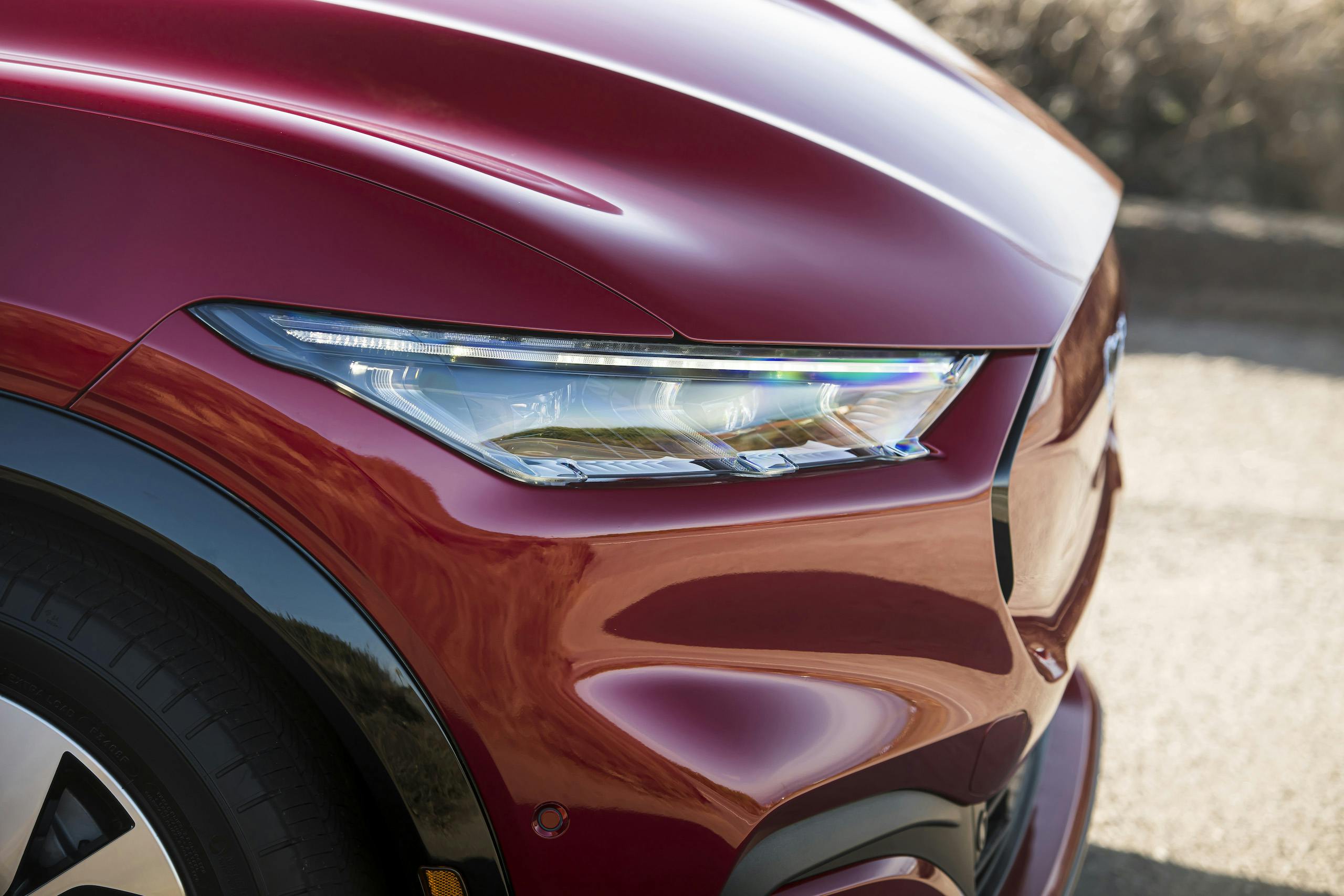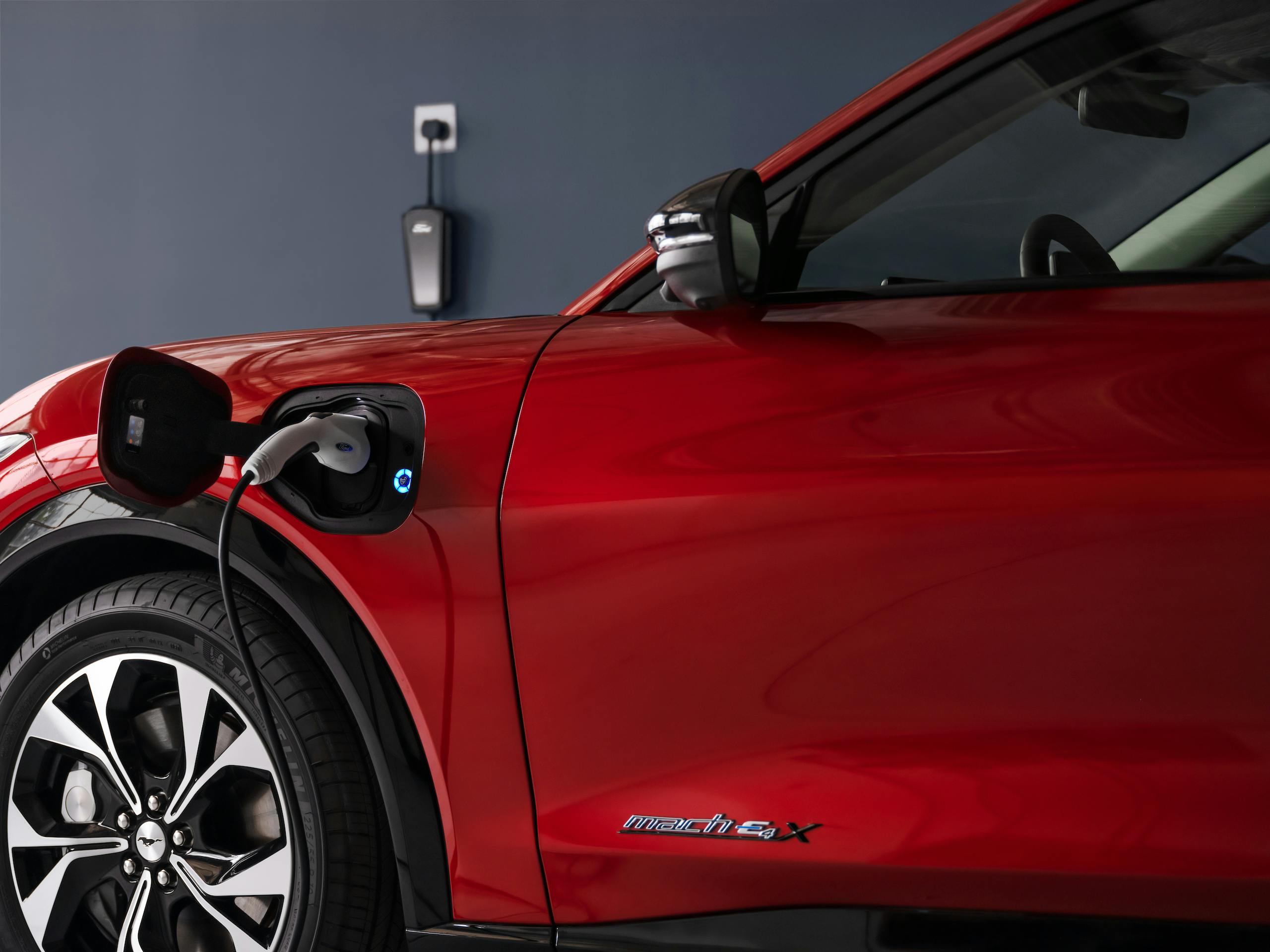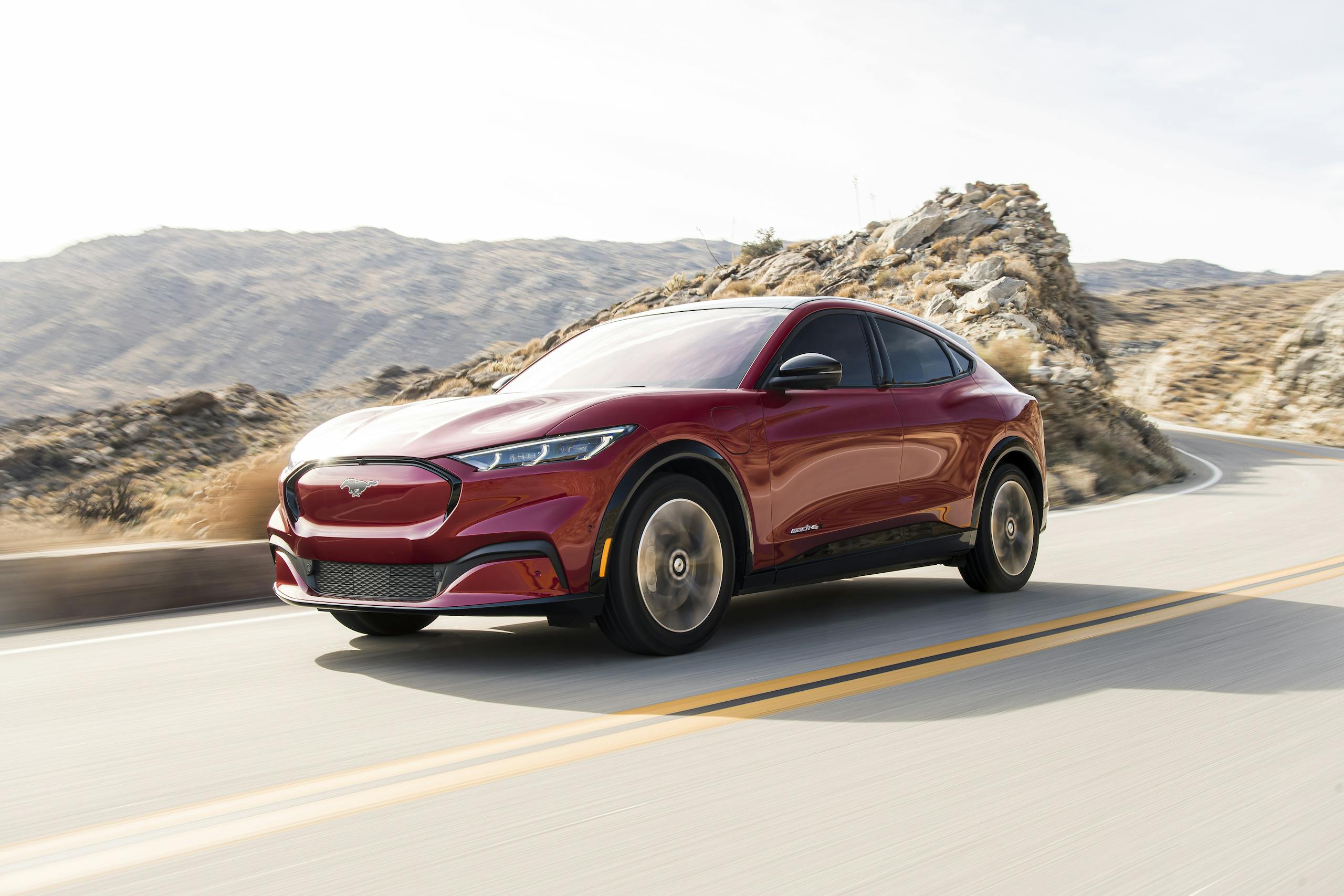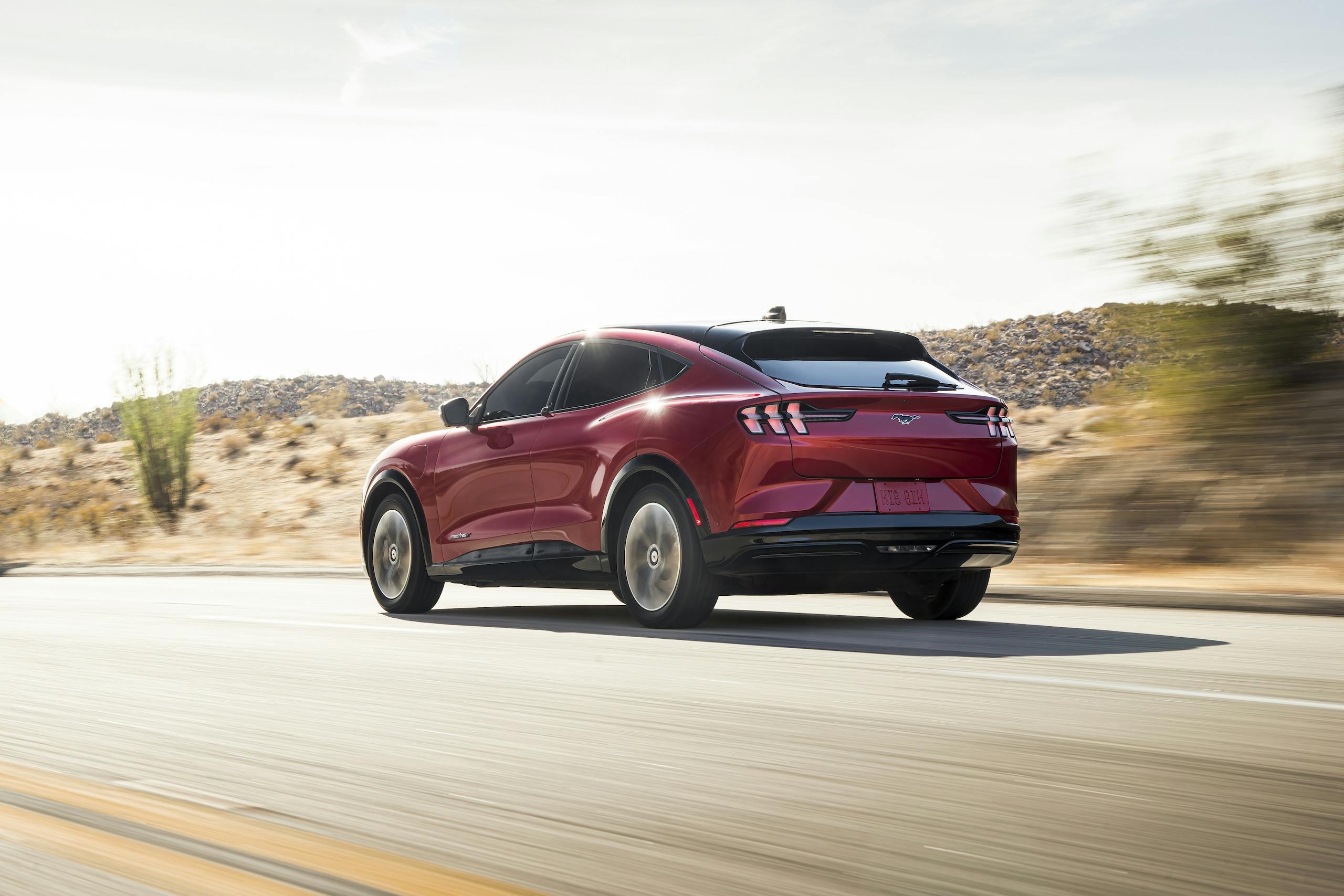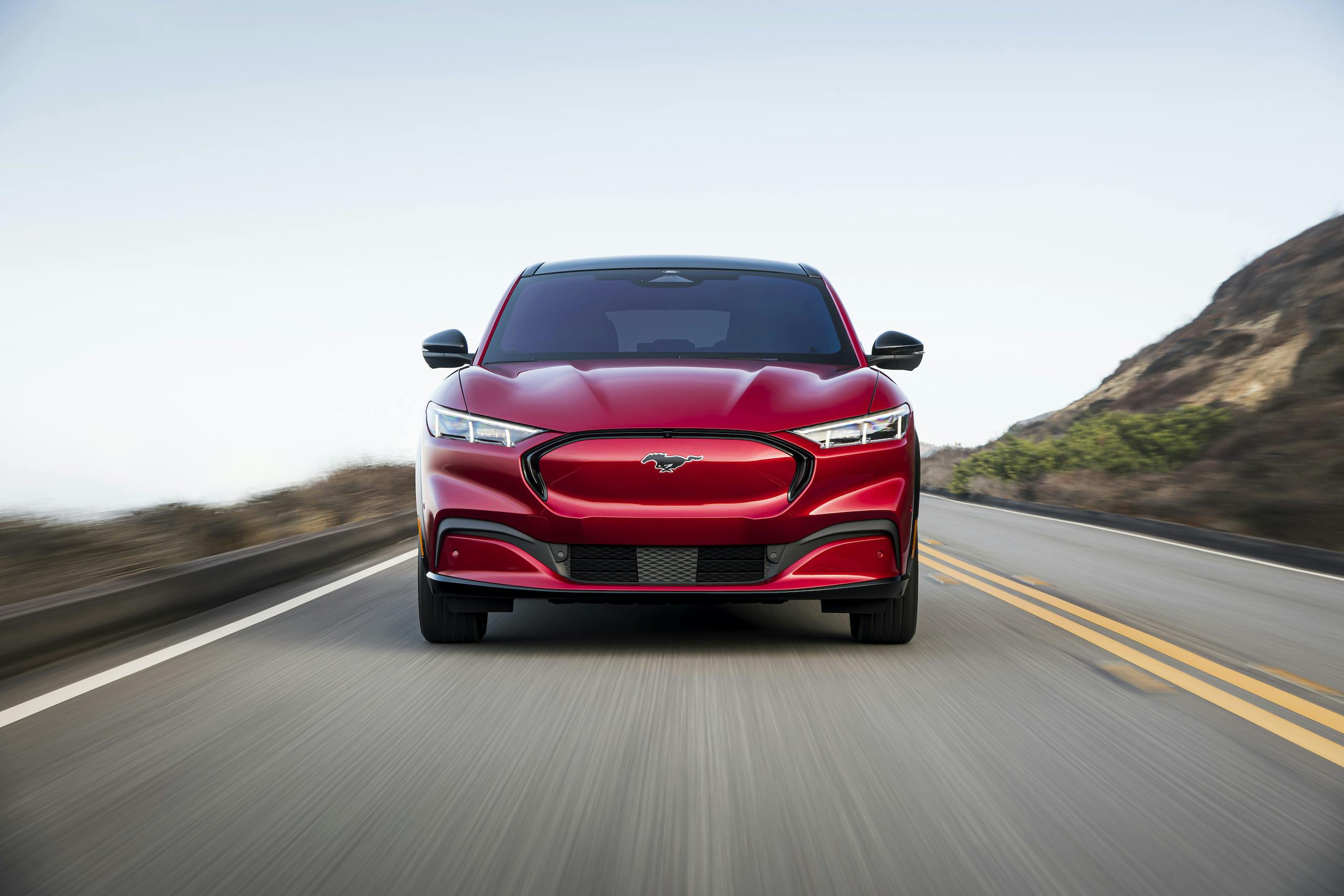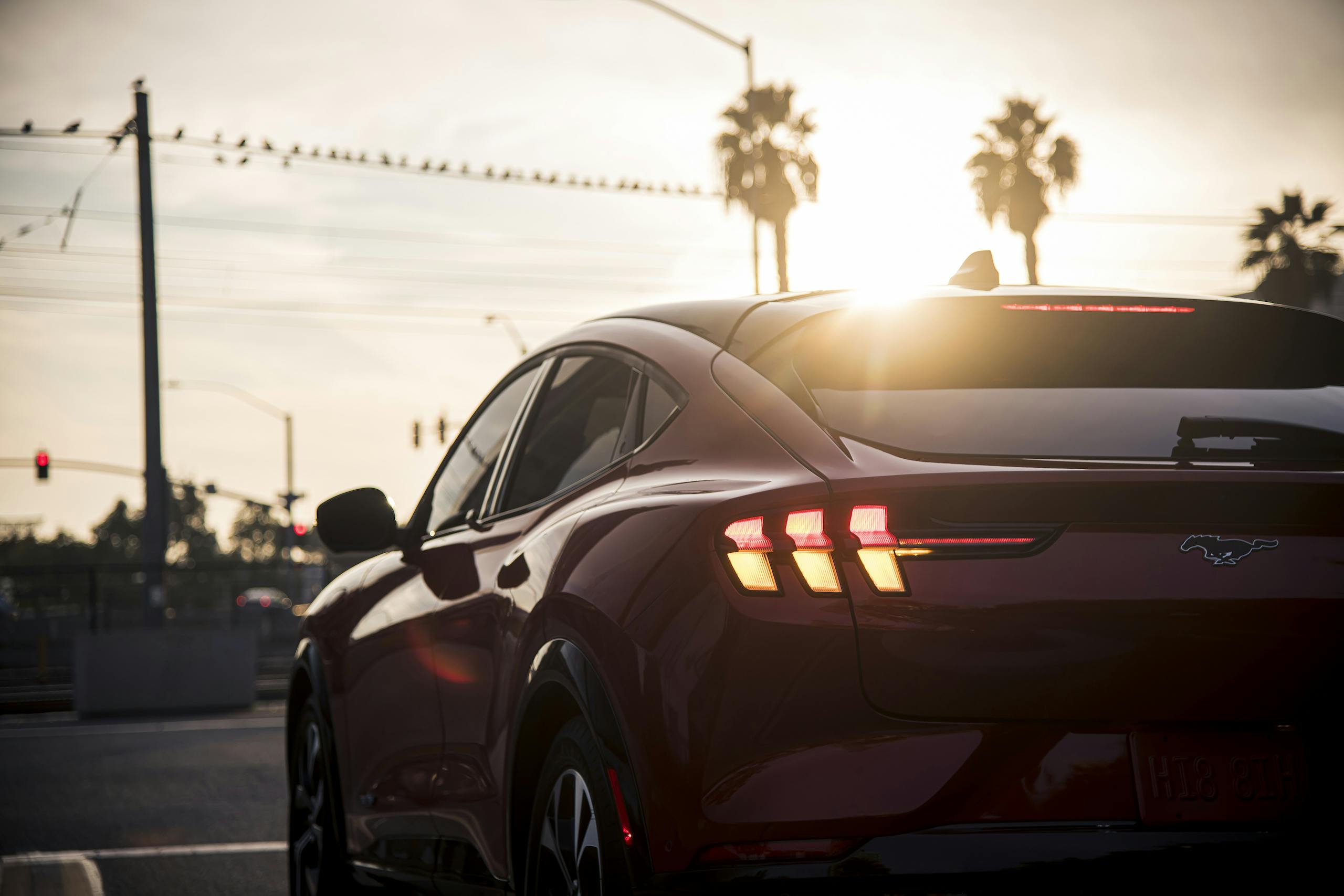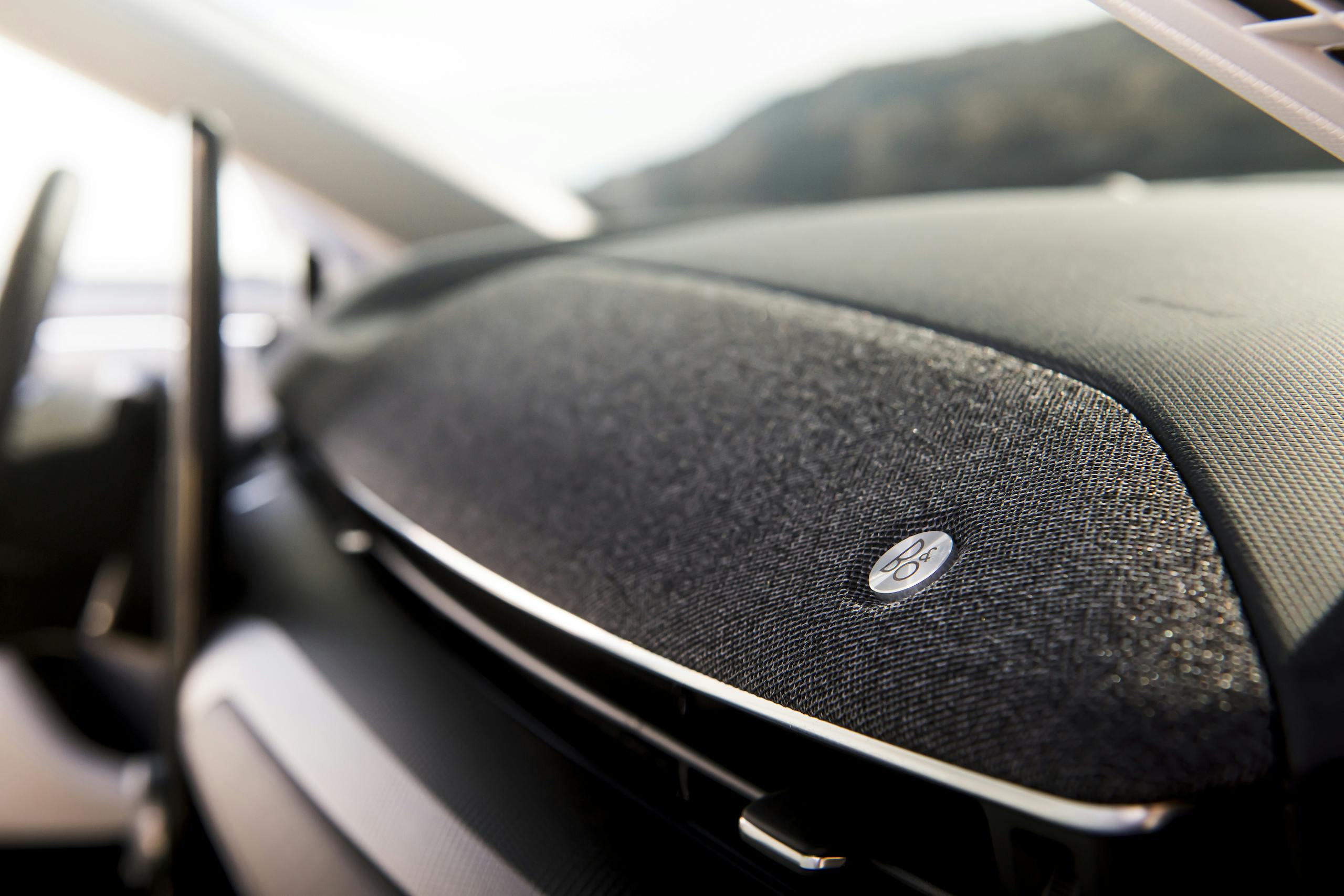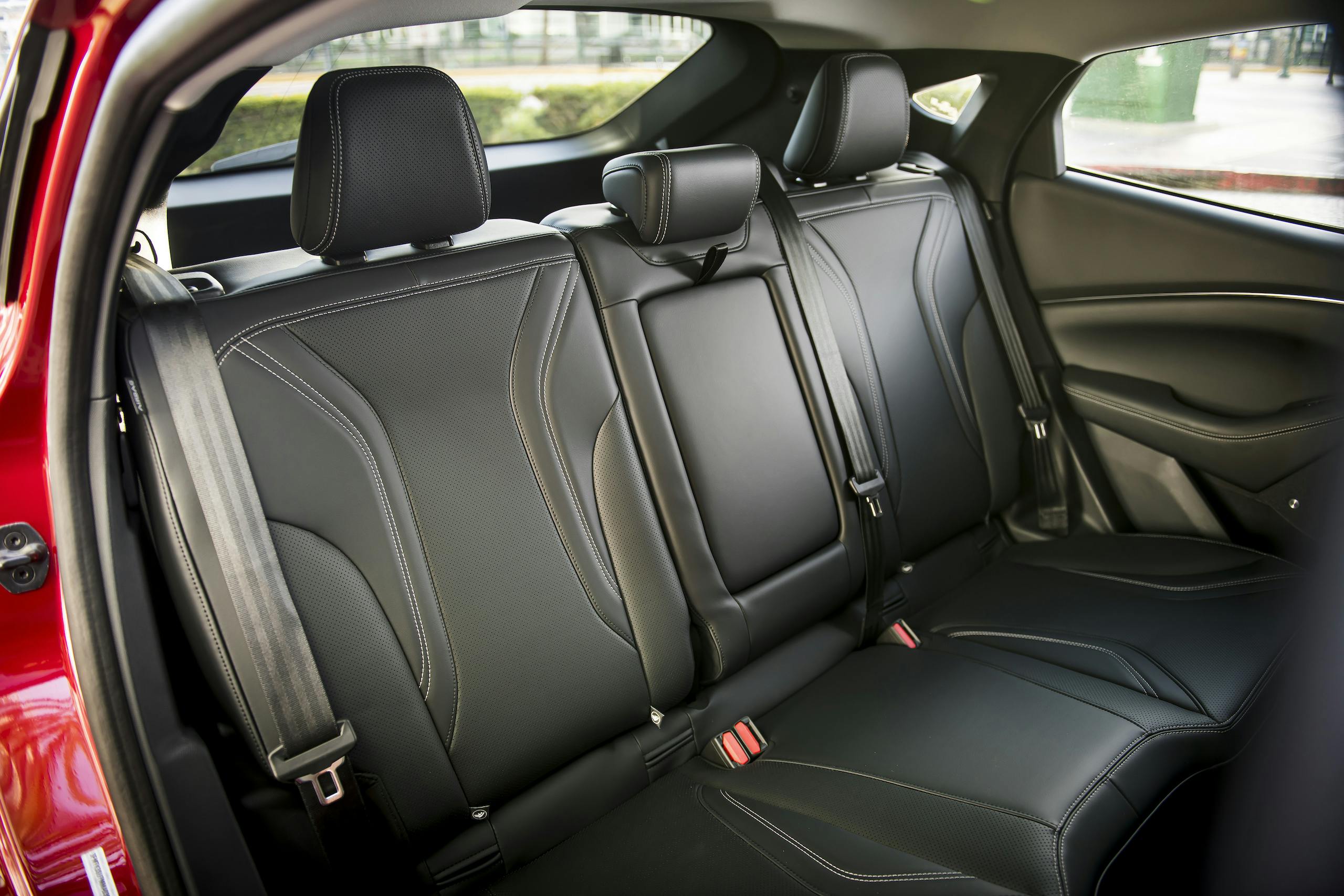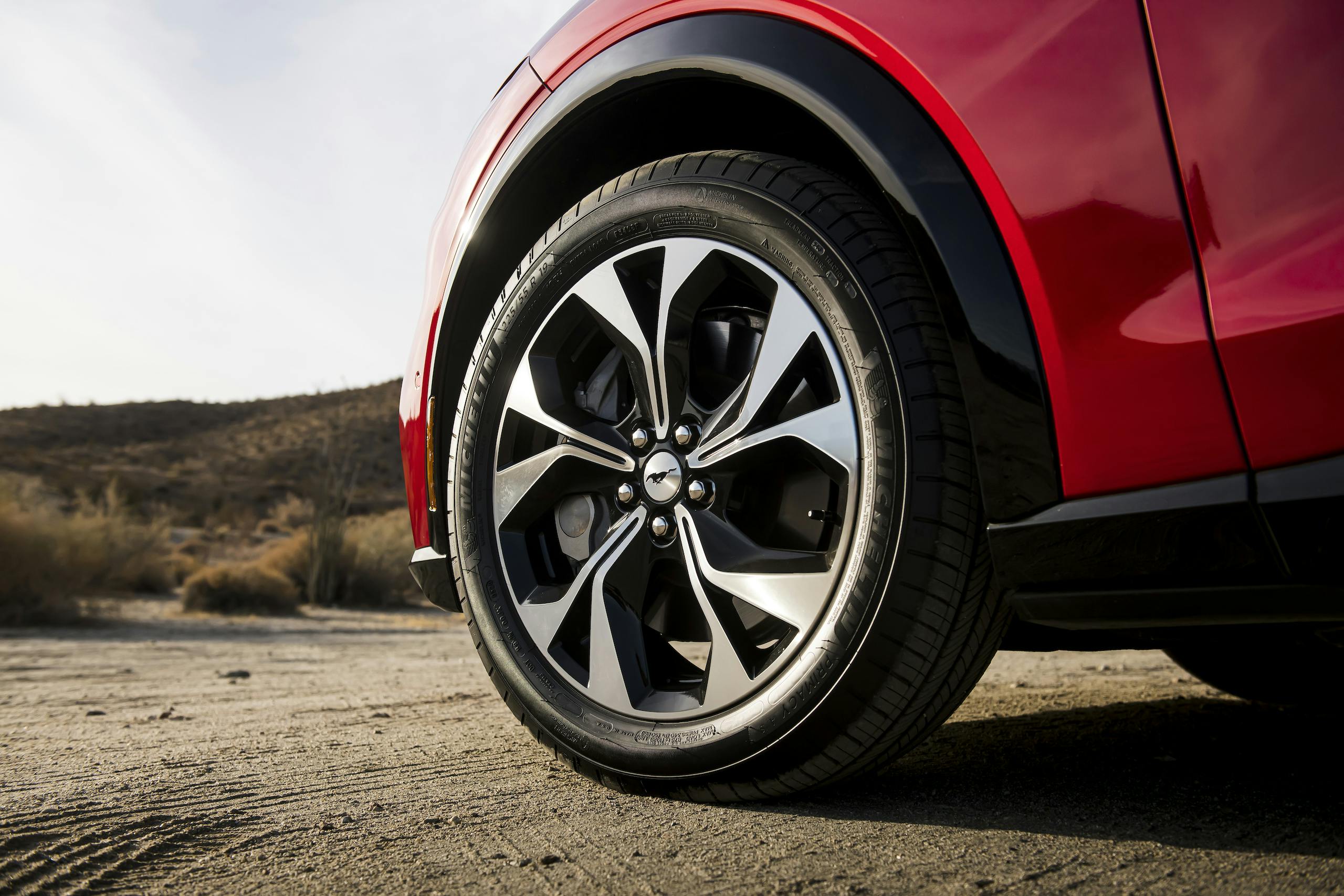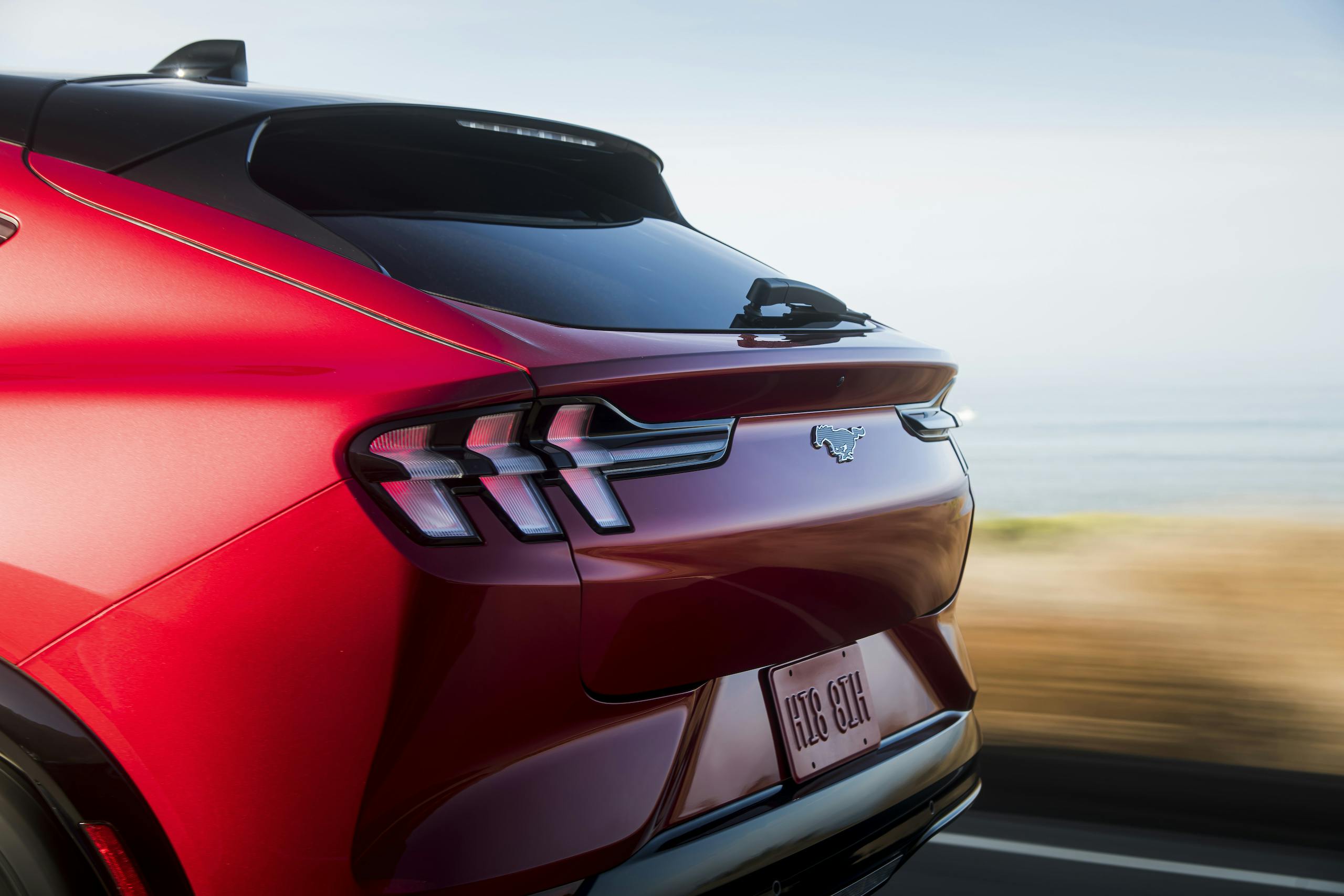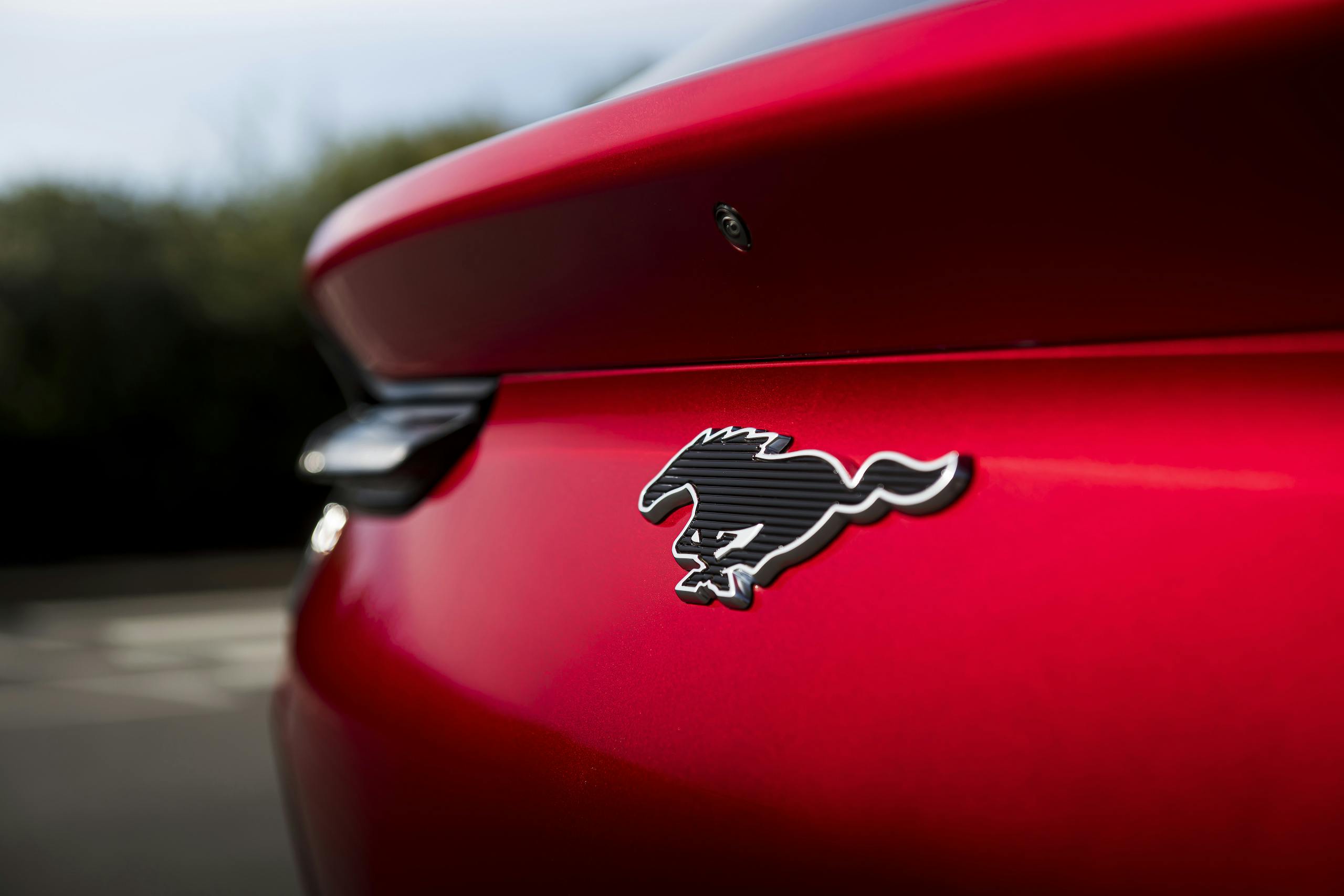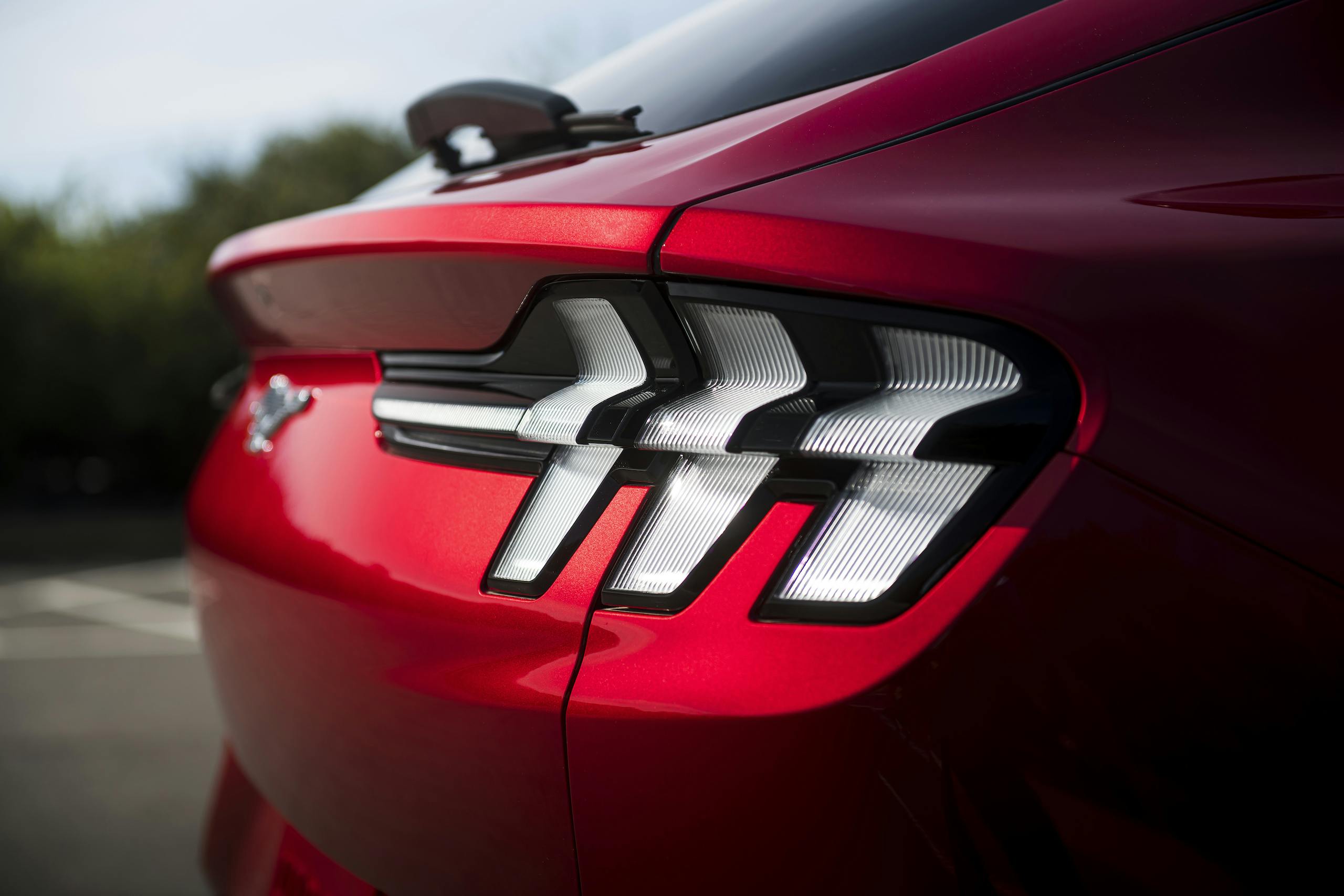Media | Articles
Review: 2021 Ford Mustang Mach-E
Let’s get this out of the way first: This electric SUV is absolutely a proper Mustang—but it’s a Mustang in the “1964 1/2 showroom riot” sense, not the “Mystichrome Terminator/GT500KR/Intercooled SVO” sense. Think for a minute about what the Mustang was on its debut. It was a fancy Falcon, a way for people to buy compact cars without the unpleasant societal and stylistic connotations that typically attended the purchase of such a car in the mid-’60s. All that stuff about winning SCCA races and grudge matches on Woodward Avenue and big-block Cobra-Jets? That came later.
(The wonderful TVTropes site calls this Early Installment Weirdness, using as examples the fact that Jason has no hockey mask until Friday The 13th Part III, or the first Rambo movie where the central character does hardly any killing and ends up crying at the end.)
What we’re looking at, therefore, is a Mustang “reboot,” returning to the original concept of “stylish everyday vehicle for everyday people.” In that respect, the Mach-E is a smashing success, delivering all the electric-SUV qualities of its competitors with none of the nerd-chic that puts so many people off Teslas and the deliberately strange General Motors electric cars. It’s the first EV that doesn’t feel compelled to scream “HEY EVERYBODY, I’M SAVING THE PLANET!” There’s just one not-so-little fly in the ointment, and we’ll cover that later on in the review.
The Mach-E range is fairly simple at the moment, with two basic trim levels, two range levels, and your choice of AWD or rear-wheel drive. A loaded-up First Edition model is already sold out, the loaded-up California Route 1 should be available shortly, and a GT is on the way. For now, however, you’ll want to pick between Select (basically Honda EX level of equipment) or Premium (panoramic glass roof, buffed-out sound system, active parking). The two battery levels are 68 kilowatt-hours and 88 kWh. Our road test vehicle was a Premium Extended AWD, but we were also given a chance to autocross a Select RWD.
Ford wants you to operate your Mach-E with the phone as a key. This is a good idea in theory, and gives you access to all sorts of fun features, but in practice it also means that the car can become deeply confused as to whether it’s turned on and/or whether it should be allowed to drive anywhere. When your humble author managed to knock the Ford-provided iPhone down between the seats, the Mach-E decided that it had lost connection with its “key”, at which point it refused to shift out of Park. That shifting, by the way, is done via a cheap-looking rotary shifter that is completely at odds with the rest of the interior vibe, almost like Ford planned to do something else but simply forgot to order the real part before the start of production.
Marketplace
Buy and sell classics with confidence
Virtually all your interaction with the Mach-E is done via the massive center touchscreen. This interface is reason enough to buy a Mach-E over a Tesla; it bears all the marks of having been thoroughly sweated over during the design phase. All the features are easy to access, it automatically remembers and prioritizes the last few “apps” you used, and it doesn’t wash out even in bright sunlight. It will cheerfully pair with phones other than the “key” phone for calling or audio purposes. It can easily be argued that the current fashion for big-touchscreen-as-center-console is an absolutely dismal idea—but this is the best implementation of that dismal idea yet. There’s a rotating control knob on the screen itself. Supposedly it has no mechanical connection to anything but instead communicates via magnets (how do they work?) or something similar. It feels reasonably solid in operation.
The Mach-E has different “moods”, easily selected via the touchscreen. Do you want maximum range? Easily done. Sporty driving feel? Yes. A custom combination of various factors, tied to your phone so you can be happy in a shared vehicle? Of course. Choosing the car’s mood also affects what is shown on the instrument panel, which of course is a large single LCD panel with three infrared sensors above it to monitor your attention and/or crimethink.
The Premium stereo, which is merely okay in actual use, will also play you a “Propulsion Sound” that sounds like an approximation of various movie-starfighter noises. Without it, the Mach-E is eerily silent, adding just a low hum of actual mechanical activity to the wind and tires. With or without the X-Wing soundtrack, this is a pleasant place to be. The low roof makes it feel car-like but there’s still room for a six-four driver to sit in front of an equally-sized rear-seat passenger. The materials are pretty good; if you like the current Ford Edge, you’ll like this. There’s a visible and touchable difference between the Select and Premium trim, as there is in the equivalent Edges. Select is a bit rental-car-ish. The biggest nitpick: the bottom seat cushion doesn’t tilt, regardless of trim level! This matters more than one might think in a crossover-seating-position vehicle. Taller drivers will have clear air beneath their knees. For long-haul use, this makes a real (and negative) difference.
Ford is very proud of its cargo management partitions and whatnot—the rear cargo cover, in particular, will deform to fit odd-sized objects so it never has to be retracted. There’s plenty of space for phones and drinks up front. Ahead of the driver, where engines are commonly found in traditional Mustangs, there’s a “frunk” with 36 gallons of space.
To enter a Mach-E, you ensure you’re in possession of your phone, then you press a button which pops the doors out. Time to drive. First impression: the mirrors are tiny, about the size of what I have in my 1986 Grand Marquis. It would take a brave soul to rely on them. The fixed panoramic roof has no center support beam, presumably because Tesla doesn’t have one either. Visibility to the rear is not great, which is also the case with Tesla SUV-factor vehicles.
In motion, the Mach-E is quick but not fast. Off the line it feels very torquey, but the initial Coyote-engined-GT shove off the line gets weedy awfully quickly once the magic 60 mark is reached. As with virtually all electric vehicles, the Mach-E appears to lose interest in acceleration as the needle climbs; it’s the precise opposite of a superbike or a high-revving sports car in that regard. Ford is very proud of the car’s rear-biased torque split, and indeed you can make it kick the tail out a little bit on slick roundabouts, but the obvious enthusiasm of, say, a Mustang V6 Performance Package is conspicuous by its absence here.
Accelerating with any vigor whatsoever will also deplete the battery in a hurry. Heck, just setting the thing to the “Active” mood and pushing through some back roads will cause the range to drop in quite alarming fashion. If you do so, however, you’ll discover decent front-end bite in corners and braking behavior that will really frustrate experienced racers. The initial “bite” is very strong because the regeneration is baked in, but if you really dig deep for maximum deceleration heading towards a slow corner, the regeneration abandons ship and the Mach-E is revealed to be another piggy SUV with too much weight and not enough pad surface.
On the autocross pad, the RWD Mach-E handled in a manner best described as “good, for a middlin’ SUV.” It’s easy to ask too much from the front end, and if you’re doing more than 30 mph there’s not enough torque available to easily correct the situation and adjust the cornering angle. Probably the worst-handling Mustang since, oh, let’s say the 1995 3.8-liter base coupe. If you’ve driven a Ford lately, and that Ford had sporting pretensions, you won’t be impressed by the Mach-E.
Truthfully, the best way to drive this car is to set it to “1-Pedal Mode”, turn on all the automatic driving features, and simply exist as a largely disinterested consumer/economic unit who only intervenes when the electronics can’t figure things out. The single-pedal mode takes all of three minutes to master and you’d be a fool to use anything else while commuting. Your humble author enjoyed it so much he almost ran his Lincoln MKT into a parking block immediately after driving the Mach-E. The feature is supremely relaxing and done so much better by Ford than by anyone else. Regular Mustangs should have it, too. There’s no reason it couldn’t exist on gasoline-powered vehicles, most of which do their braking at least partially by wire nowadays.
The Mach-E isn’t a bad way to get around. It really isn’t. It’s superior to the equivalent Teslas in everything but raw acceleration, something the upcoming GT model will surely address. Most importantly, it feels like a real car, not a science project. Unhappily, it will be assembled in Mexico rather than in Flat Rock, making the price rather hard to swallow. About that price: it starts at $42,895 for a short-range RWD Select and jumps up to $54,700 for the extended AWD model provided by Ford for over-the-road testing. $7500 of that may come back to you courtesy of your fellow taxpayers. Much cheaper than the equivalent Tesla, which is probably all that matters. The same kind of money, however, will get you a very different kind of Mustang—the Mustang Mach 1, which is much more fun.
Look for the Mach-E to be a tremendous success. Not to 1964 1/2 levels, but then again we live in a different world nowadays. The genius of the original Mustang was that it brought style to the average American, but in 2020 the average American can’t afford a new car. Ford’s bland acknowledgement of this, in the Mach-E’s pricing and brand positioning, is the only thing that makes this electric SUV a little hard to like. I don’t think Lee Iacocca would have done it this way. I think he would have waited until the tech allowed for a $24,995 price, and then he would have dropped it on showrooms like an atomic bomb, at which point it would have sold in numbers that rivaled the 1964 1/2 original. Oh well. What’s that saying about wooden ships and iron men? In 1965, we had electric leadership and fossil-fuel cars. Now, we have something like the reverse. If you’re looking at a Tesla, you’ll want to look at this. If not, Ford still makes the 5.0, which is a real Mustang in the 2021 sense, not the 1964 1/2 sense, and all the better for it.
2021 Ford Mustang Mach-E Premium AWD Extended
Price: $54,700 as tested.
Highs: Intelligent design, particularly on the inside. Great one-pedal mode. Lot of space.
Lows: Doesn’t look like anything in particular, priced for the upper middle class.
Summary: The original Mustang was aimed at secretaries; this one’s not a Boss, but it’s aimed at the bosses.












